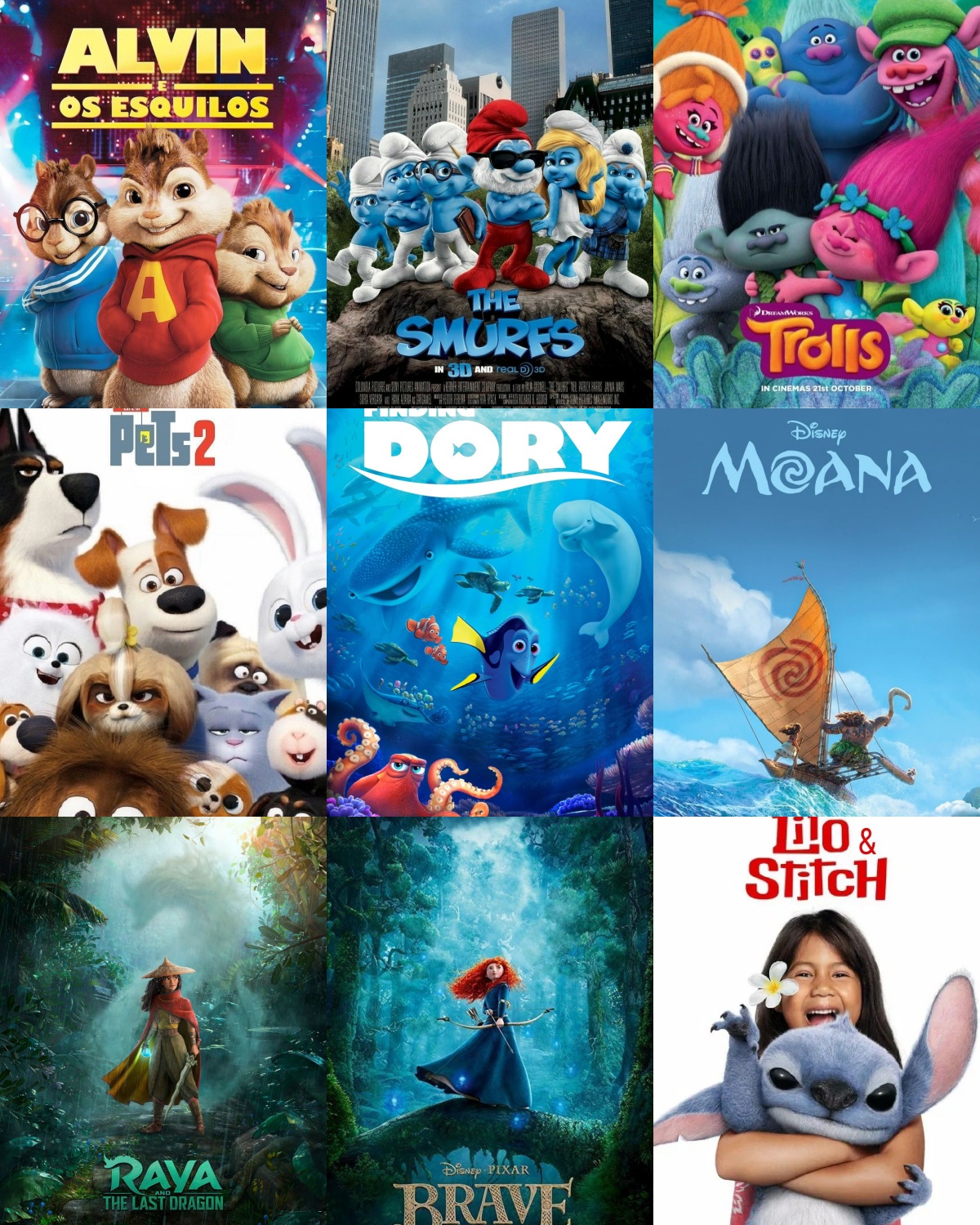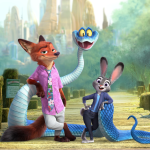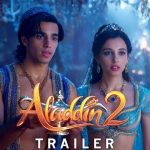When Dreams Come Alive: The Art of Animation!

Related Movies:
Related Movies:
Related Movies:
Related Movies:
Related Movies:
Related Movies:
https://www.youtube.com/watch?v=wBF33mtj2ig
Related Movies:
Alvin and the Chipmunks (2007)
Alvin and the Chipmunks (2007), directed by Tim Hill, is a live-action/CGI-animated hybrid film that revives the classic 1960s animated series and brings it into the modern era with a mix of family-friendly humor and catchy tunes. The film follows the adventures of Alvin, Simon, and Theodore, three chipmunk brothers who have the ability to sing, but have been living in the wild after being separated from their creator, Dave Seville (played by Jason Lee).
The film kicks off when the chipmunks find their way into Dave’s life and become a sensation due to their musical talents. Dave, a down-on-his-luck songwriter, becomes their manager, and together they embark on a journey to stardom. However, as their popularity grows, the chipmunks must deal with the pressures of fame, while also learning valuable lessons about family, responsibility, and teamwork.
The biggest draw of Alvin and the Chipmunks is, of course, the titular characters. Alvin (voiced by Justin Long), Simon (voiced by Matthew Gray Gubler), and Theodore (voiced by Jesse McCartney) are endearing, mischievous, and full of personality. Alvin is the troublemaker, always causing chaos but with a heart of gold, while Simon is the intelligent and responsible one, and Theodore is the sweet and innocent, albeit naive, member of the trio. Their dynamic is the heart of the film, providing plenty of comedy and emotional moments.
The CGI animation is impressive, with the chipmunks being fully integrated into the live-action world, allowing them to interact with the human characters in a believable way. Their personalities shine through their animations, and the attention to detail in their movements and expressions gives them a lively and fun appearance. The film cleverly uses the chipmunks’ size as a comedic element, highlighting their interactions with the much larger human world around them.
The film’s humor is aimed squarely at families, with plenty of slapstick comedy, funny one-liners, and humorous situations that kids will enjoy. There are also a few jokes that will resonate with adult viewers, making the film appealing to a broader audience. While some may find the humor a bit juvenile at times, it does a good job of balancing lightheartedness with moments of genuine emotion.
Jason Lee’s performance as Dave Seville is surprisingly warm and relatable. He serves as a solid foil to the chipmunks, playing the exasperated but loving father figure who’s trying to make the best of an impossible situation. His relationship with the chipmunks is central to the film’s heart, and his interactions with them provide a lot of the movie’s emotional depth. David Cross, as the film’s antagonist, Ian Hawke, plays a more traditional villain role, creating conflict by trying to exploit the chipmunks for personal gain.
The film’s soundtrack, filled with catchy songs performed by the chipmunks, is a big part of its appeal. The chipmunks’ version of popular hits like “Bad Day” and “Witch Doctor” add to the film’s charm and energy, making the musical numbers fun and entertaining. The chipmunks’ voices, despite being artificially pitched up, have an infectious energy that makes them enjoyable to listen to, and the songs are a major part of the film’s lighthearted, feel-good vibe.
While Alvin and the Chipmunks may not have the depth of some other animated films, it succeeds in what it sets out to do: provide a fun, energetic, and family-friendly movie that both children and adults can enjoy. It’s a film that’s easy to watch, with a good mix of comedy, heart, and catchy tunes that make it a hit for families looking for a light-hearted experience.
In conclusion, Alvin and the Chipmunks is an enjoyable, whimsical movie that brings the iconic characters to a new generation. With its lovable chipmunks, catchy music, and family-centric themes, it’s a film that delivers on fun without taking itself too seriously
The Smurfs (2011)
The Smurfs (2011), directed by Raja Gosnell, is a live-action/CGI hybrid film that brings the beloved blue creatures from the classic animated series to life in a big-screen adventure. With its vibrant animation, charming characters, and family-friendly humor, the film introduces a new generation to the Smurfs, while also appealing to fans of the original franchise.
The story follows the iconic Smurfs—led by the lovable and optimistic Papa Smurf (voiced by Jonathan Winters)—as they are accidentally transported from their peaceful village in the forest to modern-day New York City, after being chased by the evil wizard Gargamel (voiced by Hank Azaria). Struggling to find a way back to their village, the Smurfs seek refuge with a kind-hearted couple, Patrick (Neil Patrick Harris) and Grace (Jayma Mays), who are caught up in the Smurfs’ whirlwind adventure while also trying to help them escape Gargamel’s clutches.
The film’s plot is simple but effective, blending elements of fantasy with real-world situations. The Smurfs’ naïve, magical ways provide a fun contrast to the bustling, high-tech world of New York City, leading to many humorous fish-out-of-water moments. The storyline revolves around themes of teamwork, friendship, and perseverance, with the Smurfs showing that even the smallest and seemingly insignificant creatures can make a big difference.
The animation in The Smurfs is bright and colorful, capturing the whimsical nature of the original cartoon while updating it for a modern audience. The Smurfs themselves are faithfully recreated, with their distinctive blue skin, white hats, and tiny size making for a visually appealing design that is both familiar and fun to watch. Their interactions with the real-world characters are seamlessly blended with CGI, making them feel integrated into the live-action world.
The voice cast is a big highlight of the film. Jonathan Winters brings warmth and wisdom to Papa Smurf, while other voice actors like Katy Perry (Smurfette), George Lopez (Bashful), and Anton Yelchin (Clumsy) provide personality and humor to their respective characters. The Smurfs’ charm lies in their collective innocence and optimism, and the voice actors bring these qualities to life with great enthusiasm.
Hank Azaria’s portrayal of the villainous Gargamel adds a touch of humor to the film, with his over-the-top antics and obsession with capturing the Smurfs. Although Gargamel is a classic villain, Azaria injects him with a comical energy that makes him more fun than threatening, creating a lighter, more playful antagonist that fits the film’s overall tone.
While the film’s humor is geared towards younger audiences, there are also plenty of jokes and references that adults will appreciate. The movie blends slapstick comedy with clever dialogue, and the Smurfs’ pure-hearted innocence provides a lot of laughs as they navigate the human world. However, some of the humor can feel a bit repetitive or predictable at times, and the plot may not offer much complexity beyond its simple premise.
The soundtrack includes several fun and upbeat songs, with Smurfette’s rendition of “Out of the Blue” and other songs adding to the film’s playful tone. The music complements the lighthearted nature of the movie, providing a catchy backdrop to the action and adventure.
Overall, The Smurfs (2011) is an entertaining and family-friendly film that successfully introduces the classic characters to a new generation. While the plot may be simple and the humor geared toward younger audiences, the charm of the Smurfs, their colorful world, and the comedic performances make it an enjoyable watch for families. It’s a fun, whimsical movie that delivers on its promise of bringing the Smurfs’ magic to the big screen
Trolls (2016)
Trolls (2016), directed by Mike Mitchell and Walt Dohrn, is a bright, bubbly, and musical animated film that delivers a heartwarming and visually stunning experience for all ages. Based on the colorful troll dolls that became a worldwide craze in the 1960s, the film takes these nostalgic toys and turns them into endearing, quirky characters in a fantastical world full of music, adventure, and positive messages.
The story follows Poppy (voiced by Anna Kendrick), an endlessly optimistic troll who is the leader of her village, and Branch (voiced by Justin Timberlake), a grumpy and paranoid survivalist troll. When their peaceful lives are threatened by the sinister Bergens, large creatures who can only experience happiness by eating trolls, Poppy and Branch team up to rescue their friends and bring happiness back to their world.
At its core, Trolls is a film about the power of positivity, friendship, and overcoming adversity. Poppy’s relentless cheerfulness is tested when the dark threat of the Bergens looms over her village, but it’s her unwavering belief in happiness and togetherness that ultimately saves the day. The movie strikes a great balance between humor, heart, and fun, offering important life lessons while never losing its sense of joy and playfulness.
The animation is one of the standout features of Trolls. The world-building is vibrant and magical, with each character and environment bursting with color. The trolls themselves are designed in a way that reflects the iconic troll dolls, with their wild hair and exaggerated features. The fantastical world they inhabit is full of whimsy, from the towering candy mountains to the glittering forest, making the setting feel like a dreamlike wonderland.
The music is another highlight of the film. With a soundtrack that’s packed with catchy tunes, including original songs and classic hits, the film keeps a high-energy, upbeat vibe throughout. Justin Timberlake, who also serves as an executive producer on the film, contributes to the music with the hit song “Can’t Stop the Feeling!” which became an instant anthem. The soundtrack complements the film’s theme of finding joy through music, and the dance-worthy sequences add a lively touch to the story. The characters themselves break into musical numbers throughout the film, making it feel like a true musical adventure.
Anna Kendrick’s performance as Poppy is full of energy and warmth, perfectly capturing the character’s endless optimism and infectious personality. Justin Timberlake’s Branch is a great foil to Poppy, with his sarcastic, down-to-earth demeanor providing comedic contrast to her bubbly nature. The dynamic between the two characters is central to the film’s heart, and their evolving friendship is both touching and humorous.
The supporting cast, including the voices of Christopher Mintz-Plasse, Russell Brand, and Gwen Stefani, adds additional layers of humor and quirkiness to the film. Even though the film’s primary focus is on Poppy and Branch, these characters play pivotal roles in making the adventure feel larger than life, each contributing to the film’s theme of embracing individuality and finding strength in unity.
While Trolls is light-hearted and primarily aimed at children, its vibrant animation, catchy soundtrack, and positive messages ensure that it appeals to a broad audience. There are moments of genuine emotion, especially in the exploration of Branch’s personal growth and Poppy’s determination to bring joy to others, making the film not just fun, but also heartfelt. The humor is geared toward younger viewers but remains enjoyable for adults, with some clever references and wordplay.
Overall, Trolls is a lively, visually captivating, and musically rich film that emphasizes the importance of happiness, friendship, and embracing who you are. Its combination of heart, humor, and catchy tunes make it an enjoyable and uplifting film for families and fans of animated musicals. Whether you’re looking for a feel-good adventure, an energetic dance party, or simply a colorful world to get lost in, Trolls delivers it al
The Secret Life of Pets 2 (2019)
The Secret Life of Pets 2 (2019), directed by Chris Renaud and Jonathan del Val, is the highly anticipated sequel to the 2016 animated hit The Secret Life of Pets. This time around, the film brings back our favorite furry friends, with an expanded storyline that explores the lives of pets when their owners are away, all while delivering the same blend of humor, heart, and adventure that made the first movie so popular.
The film follows multiple storylines, with the main plot focusing on Max (voiced by Patton Oswalt), a terrier who is adjusting to life with his new family member, a young boy named Liam. When Max’s owner, Katie (voiced by Ellie Kemper), decides to take the family on a trip to the countryside, Max faces new challenges and fears about protecting Liam from potential dangers. Meanwhile, Snowball (voiced by Kevin Hart) and the lovable bunny group embark on a mission to rescue a kidnapped tiger, and Gidget (voiced by Jenny Slate) gets involved in her own adventure when she has to retrieve a toy from a cat’s lair.
One of the strengths of The Secret Life of Pets 2 is its ability to balance multiple storylines, all while keeping the focus on the pets’ personalities and relationships. Max’s storyline about growing up and learning to trust others, especially his new role as a protector for Liam, adds emotional depth to the film. Meanwhile, Snowball’s heroic escapades, paired with his over-the-top personality, provide the comedic relief that keeps the film lighthearted and fun. Gidget’s subplot, though a bit of a side story, is charming and adds to the overall sense of teamwork and loyalty that the pets share.
The animation is just as vibrant and energetic as in the first film, with the colorful cityscapes, the bustling environments, and the expressive characters making the world feel alive and full of personality. The pet characters are wonderfully designed, and their facial expressions and movements really capture the essence of what makes pets so endearing—whether it’s Max’s intense protectiveness or Snowball’s exaggerated bravado. The backgrounds are visually engaging, making the film a treat for the eyes.
The voice cast, once again, delivers strong performances. Patton Oswalt steps in for Louis C.K. as the voice of Max, bringing a fresh take to the character, and he does an excellent job of portraying Max’s lovable but anxious nature. Kevin Hart is once again a standout as Snowball, his energetic and comedic delivery making every line he delivers a highlight of the film. Jenny Slate’s Gidget is equally charming, with her high-pitched, overzealous persona bringing a lot of humor to her scenes.
The film’s humor is broad and family-friendly, with plenty of slapstick moments and visual gags that will keep kids laughing. The writing also includes jokes for adults, often through clever references or situational humor that goes over the heads of younger viewers. Snowball’s role as a “superhero” with his own secret identity adds an extra layer of fun, and his dynamic with the other characters—particularly his interactions with Daisy (voiced by Tiffany Haddish), a new character—brings an enjoyable energy to the film.
While The Secret Life of Pets 2 doesn’t break new ground in terms of storytelling, it is a satisfying sequel that delivers exactly what audiences loved about the first film: lovable characters, cute pets, and a fun mix of action and humor. The overarching theme of friendship, loyalty, and the challenges of growing up resonates well, particularly with Max’s journey of learning to accept change and new responsibilities. The film’s pacing is fast and engaging, with enough action and humor to keep both kids and adults entertained throughout.
In conclusion, The Secret Life of Pets 2 is an enjoyable, lighthearted animated film that successfully builds on the first movie’s charm while offering new adventures, heartwarming moments, and plenty of laughs. While it may not be as fresh as the original, it still provides a delightful, family-friendly viewing experience that will appeal to pet lovers and animation fans alike. It’s a perfect pick for a fun, easy-going movie night with the family
Finding Dory (2016)
Finding Dory (2016), directed by Andrew Stanton and Angus MacLane, is the highly anticipated sequel to Pixar’s Finding Nemo (2003), which continues the heartwarming underwater adventure of its beloved characters. While the first film focused on Marlin’s journey to find his son, Nemo, Finding Dory shifts the spotlight to the forgetful blue tang fish, Dory (voiced by Ellen DeGeneres), who embarks on a journey to find her long-lost family and uncover the truth about her past.
The story kicks off when Dory suddenly recalls a distant memory of her parents and realizes that she has forgotten where they are. Determined to reunite with them, she sets off with her friends, Marlin (voiced by Albert Brooks) and Nemo (voiced by Hayden Rolence), on an adventure that takes them from the ocean to a marine rehabilitation center. Along the way, they meet new characters, including the grumpy but lovable octopus Hank (voiced by Ed O’Neill), a nearsighted whale shark named Destiny (voiced by Kaitlin Olson), and a beluga whale named Bailey (voiced by Ty Burrell), who all help Dory in her quest.
The film’s main theme centers on the importance of memory, self-discovery, and the value of family. Dory, who has always been known for her forgetfulness, embarks on a journey of self-empowerment as she faces her own challenges and learns to embrace who she is. Her quest for her parents is not just about finding them, but also about understanding herself and the impact of her unique personality on the world around her. The story is heartfelt and emotionally resonant, filled with moments of both humor and poignancy, particularly as Dory reconnects with her past.
The animation in Finding Dory is stunning, with Pixar’s signature attention to detail bringing the underwater world to vibrant life once again. The ocean landscapes are beautifully rendered, filled with colorful coral reefs, bustling aquatic life, and sun-dappled water that creates a sense of wonder and magic. The animation is as fluid and graceful as the characters themselves, giving the audience a truly immersive experience.
Ellen DeGeneres reprises her role as Dory, and her voice acting remains one of the highlights of the film. She brings her signature humor and charm to the character, making Dory both funny and endearing, while also giving her the emotional depth that makes her journey so touching. Albert Brooks’ return as Marlin is equally delightful, with his character continuing to be the cautious and loving foil to Dory’s spontaneous nature. New additions to the cast, such as Ed O’Neill’s Hank, a curmudgeonly octopus with a soft spot for Dory, add new layers of humor and warmth to the film.
The supporting characters, especially the trio of Destiny, Bailey, and Hank, provide great comic relief and emotional support for Dory throughout her journey. Hank’s gruff exterior hides a deep care for Dory, and his arc adds a layer of growth and redemption to the story. Destiny and Bailey’s friendship is sweet and supportive, offering a sense of community and belonging.
The humor in Finding Dory is a perfect balance of slapstick, witty dialogue, and heartwarming moments. While the film is filled with playful antics, especially with Dory’s mix-ups and misunderstandings, it also delivers moments of depth and emotion. It tackles themes of acceptance and the significance of memories, showing how Dory’s forgetfulness is not a weakness, but part of her charm. The film also touches on themes of perseverance, showing that even when things don’t go according to plan, one can still find a way forward with love and support.
The soundtrack by Thomas Newman is a beautiful complement to the visuals, enhancing the emotional impact of the film’s key moments. The music flows seamlessly with the ocean setting, giving the story a sense of fluidity and natural progression.
In conclusion, Finding Dory is a heartfelt, visually stunning, and emotionally resonant sequel that expands on the beloved world of Finding Nemo. With its charming characters, vibrant animation, and universal themes of self-discovery and family, the film is a perfect continuation of the original story. It’s a movie that will appeal to both longtime fans of Finding Nemo and new audiences, offering humor, heart, and an inspiring message that will stay with viewers long after the credits roll
Moana (2016)
Moana (2016), directed by Ron Clements and John Musker, is a visually stunning and culturally rich Disney animated film that tells the inspiring story of a young Polynesian girl’s journey to save her people. With a powerful blend of adventure, music, and heart, Moana stands out as a modern Disney classic, offering not only entertaining visuals and catchy tunes but also meaningful messages about self-discovery, courage, and the importance of heritage.
The story follows Moana (voiced by Auli’i Cravalho), a 16-year-old girl who is the daughter of the chief of the island village of Motunui. As the heir to the village, Moana is expected to become a leader, but she feels a deep yearning to explore the ocean beyond her home. When the island’s crops begin to fail and the fish disappear, Moana learns from her grandmother that the island’s ancient traditions and connection to the sea were broken when the demigod Maui (voiced by Dwayne “The Rock” Johnson) stole the heart of Te Fiti, the goddess of creation. Moana is tasked with returning the heart to its rightful place and restoring the balance of nature. Her adventure takes her across the open ocean, where she teams up with Maui, the shape-shifting, egotistical demigod, to restore the heart and save her people.
The film’s primary theme is one of self-discovery and finding the courage to follow your destiny, even when it goes against the expectations placed on you. Moana’s journey is not just about saving her island, but also about embracing her true calling as a leader. Throughout the film, she learns that leadership isn’t about conforming to others’ expectations, but about forging her own path and trusting in her abilities. The character of Moana is empowering for young audiences, especially for girls, as she is brave, independent, and determined—qualities that make her a relatable and inspiring protagonist.
The animation in Moana is breathtaking. The lush landscapes of Motunui, the vastness of the ocean, and the vibrant colors all combine to create a visually rich world that feels alive and full of energy. The design of the characters, particularly Moana and Maui, is detailed and expressive, capturing the cultural significance of Polynesian traditions while also making them universally appealing. The underwater scenes, in particular, are visually stunning, with glowing sea creatures and an ever-changing ocean that feel like an integral part of the story.
A standout feature of Moana is its music, composed by Lin-Manuel Miranda, Opetaia Foa’i, and Mark Mancina. The soundtrack is filled with catchy, memorable songs that have become instant classics. The most notable song, “How Far I’ll Go,” is Moana’s anthem of self-discovery and yearning for something greater. “You’re Welcome,” sung by Maui, is a fun, cheeky number that showcases Dwayne Johnson’s surprisingly excellent vocal talents. Other standout tracks like “We Know the Way” and “Shiny” add to the film’s energy and charm, blending traditional Polynesian music with modern styles. The music not only enhances the emotional depth of the film but also beautifully complements the island setting and the characters’ journeys.
The voice cast is exceptional. Auli’i Cravalho brings depth, warmth, and strength to Moana, creating a relatable and inspiring character. Dwayne Johnson as Maui is both hilarious and heartfelt, perfectly capturing the demigod’s ego and vulnerability. The interactions between Moana and Maui are central to the film’s emotional core, as their relationship evolves from one of reluctance to mutual respect. Other supporting characters, such as Moana’s grandmother Tala (voiced by Rachel House) and her father Chief Tui (voiced by Temuera Morrison), provide additional layers of wisdom and love that guide Moana on her journey.
Moana also offers a fresh perspective on Disney storytelling. While many Disney princess films focus on romance or personal desires, Moana is driven by the protagonist’s desire to help her people and discover her place in the world. The film emphasizes the importance of community, tradition, and the balance between nature and humanity. Additionally, it respectfully incorporates Polynesian culture, exploring themes of exploration, heritage, and respect for the ocean, which are central to the film’s world.
In conclusion, Moana is an exceptional Disney film that blends stunning animation, powerful music, and a heartfelt story of self-discovery. The film’s positive messages about courage, leadership, and finding one’s own path make it both an entertaining adventure and an inspiring journey. With its unforgettable soundtrack, vibrant animation, and memorable characters, Moana is a timeless film that resonates with audiences of all ages and stands out as one of Disney’s most empowering and culturally significant animated films.
Raya and the Last Dragon (2021)
Raya and the Last Dragon (2021), directed by Don Hall and Carlos López Estrada, is a stunningly animated fantasy adventure film from Disney that draws inspiration from Southeast Asian cultures. With breathtaking visuals, action-packed sequences, and themes of trust, unity, and hope, Raya and the Last Dragon delivers a powerful and timely message while also offering a thrilling ride for audiences of all ages.
Set in the fictional land of Kumandra, the film follows Raya (voiced by Kelly Marie Tran), a skilled warrior and the daughter of Chief Benja (voiced by Daniel Dae Kim). Kumandra is divided into five warring regions, each named after a part of a dragon (Heart, Fang, Spine, Talon, and Tail). Long ago, dragons protected the land from an ancient evil force known as the Druun, but when the dragons sacrificed themselves to save humanity, the Druun returned, threatening to turn everyone into stone. The last remaining dragon, Sisu (voiced by Awkwafina), is believed to hold the key to stopping the Druun and saving the world. Raya embarks on a perilous journey to find Sisu and unite the fractured lands of Kumandra to defeat the Druun once and for all.
At its heart, Raya and the Last Dragon is about the importance of trust and unity. Raya’s journey is not only about saving her world, but also about learning to trust others in a world where betrayal and division have become the norm. This theme is especially poignant given the fractured state of the five regions, and it drives the emotional depth of the story. Throughout the film, Raya learns that while individual strength is important, true power lies in working together and rebuilding bonds that have been broken by fear and distrust.
The animation in Raya and the Last Dragon is absolutely breathtaking. The film features lush, vibrant landscapes inspired by real-world Southeast Asian cultures, with each region of Kumandra reflecting unique geographical and architectural influences. The animation captures the fluidity of martial arts and action sequences beautifully, making the action scenes both graceful and thrilling. The designs of the characters, particularly the dragon Sisu, are equally impressive, with Sisu’s colorful, ethereal appearance adding a magical touch to the visual spectacle.
Raya herself is a strong and determined protagonist who embodies the values of resilience, courage, and hope. Kelly Marie Tran brings an emotional depth to Raya, portraying her as a complex character torn between her desire to protect her people and her need to trust others. The relationships that develop over the course of the film, especially between Raya and her companions—such as the mischievous conman Boun (voiced by Izaac Wang), the tough warrior Tong (voiced by Benedict Wong), the young and optimistic Noi (voiced by Thalia Tran), and the loyal little creature Tuk Tuk—are central to the story’s emotional core. As they come together, each character has their own arc of growth, learning the importance of trust and solidarity.
Awkwafina’s portrayal of Sisu, the last dragon, is another standout. Sisu is funny, quirky, and surprisingly wise, bringing levity to what could be a very dark story. Her character provides a refreshing contrast to Raya’s serious and driven nature, offering moments of humor and light-heartedness while also providing the wisdom Raya needs on her journey. Sisu’s journey from a seemingly unreliable, comedic figure to a true hero is an important part of the story’s message about looking beyond first impressions and embracing diversity in strength.
The film’s action sequences are well-paced, exhilarating, and visually captivating. The fight scenes, which showcase Raya’s martial arts skills, are choreographed with elegance and intensity, making them a key highlight of the film. Additionally, the world-building is rich and immersive, from the stunning landscapes to the creative design of the various creatures that populate Kumandra. The world feels alive, and the detail in the environments and character designs makes the film a visual masterpiece.
The soundtrack, composed by James Newton Howard, complements the film’s tone perfectly, with sweeping orchestral scores that capture both the grandeur of the world and the emotional beats of the story. The music helps to heighten the intensity of the action sequences while also adding depth to the more reflective moments in the film.
Brave (2012)
Brave (2012), directed by Mark Andrews and Brenda Chapman, is Pixar’s foray into the realm of Scottish mythology, delivering an empowering and beautifully crafted tale about family, independence, and destiny. Set in medieval Scotland, Brave introduces Merida, a fiery and adventurous young princess who refuses to conform to the traditional expectations of her royal role. With stunning animation, a gripping story, and memorable characters, Brave stands out as both an exciting adventure and a heartfelt exploration of mother-daughter relationships.
The story centers on Merida (voiced by Kelly Macdonald), a skilled archer and free spirit who longs for independence and the ability to choose her own fate. Her mother, Queen Elinor (voiced by Emma Thompson), has different ideas for her future, believing that Merida’s role as a princess should involve marriage to one of the suitors chosen by her parents. Tensions between mother and daughter escalate when Merida, in an act of defiance, seeks out a witch and asks for a spell to change her mother. The spell backfires, turning Queen Elinor into a bear, and now Merida must work to reverse the curse before it’s too late. Throughout the film, Merida and Elinor’s relationship evolves as they learn important lessons about understanding, trust, and accepting one another.
At its core, Brave is about the struggle between independence and familial responsibility, with Merida’s journey being a quest for self-determination. The film explores the clash between her desire to control her destiny and her mother’s wish for her to fulfill her duties as a princess. The central conflict is one that many viewers can relate to, as it touches on themes of rebellion, growing up, and the complexities of parent-child relationships. Merida is not your typical Disney princess; she doesn’t wait for a prince to save her. Instead, she’s a fierce, capable, and independent young woman determined to carve her own path, making her an inspiring figure for audiences of all ages, especially young girls.
The animation in Brave is breathtaking, showcasing Pixar’s unparalleled attention to detail. The lush Scottish Highlands are beautifully rendered, with misty mountains, sprawling forests, and picturesque castles. The film’s visual richness enhances the story, bringing the rugged terrain and magical atmosphere of Scotland to life. The character designs are equally impressive, particularly the portrayal of Merida’s wild, untamed hair, which became an iconic symbol of her fiery personality.
The voice acting is a standout element of the film. Kelly Macdonald gives an outstanding performance as Merida, capturing both her youthful exuberance and her deep emotional growth throughout the story. Emma Thompson as Queen Elinor brings a sense of wisdom, restraint, and love to her character, and the relationship between mother and daughter is portrayed with depth and authenticity. The supporting cast, including Billy Connolly as King Fergus, adds charm and humor to the film, making the royal family feel warm and relatable.
One of Brave’s most significant achievements is its portrayal of the mother-daughter relationship. It’s a dynamic rarely explored in animated films, especially Disney movies, where the focus is typically on romantic relationships or friendships. Merida and Elinor’s strained yet loving relationship forms the emotional heart of the film, and their evolving bond—marked by moments of conflict, understanding, and reconciliation—makes Brave stand out as a more mature and nuanced family film.
The film’s score, composed by Patrick Doyle, perfectly complements its setting and themes. The music, inspired by Scottish folk melodies, is rich and atmospheric, adding emotional depth to both the adventure and the quieter, introspective moments of the film. The score’s blend of dramatic orchestration and traditional Scottish instruments elevates the story’s epic feel and emotional resonance.
While Brave offers plenty of thrilling moments, particularly in its action-packed scenes featuring Merida’s archery skills and the looming danger of the bear curse, it also takes time to explore deeper emotional moments. The film balances humor, action, and heart, giving audiences a chance to laugh, cheer, and reflect.
In conclusion, Brave is a visually stunning, emotionally powerful, and empowering film that offers more than just the typical animated adventure. With its unforgettable heroine, beautifully rendered world, and a heartfelt exploration of the complexities of family, Brave is a standout film in the Disney-Pixar lineup. It’s a story about finding your voice, understanding those you love, and embracing the idea that our destinies are shaped by both our choices and the people we hold dea
Lilo & Stitch (2002)
Lilo & Stitch (2002), directed by Chris Sanders and Dean DeBlois, is a heartwarming and unique animated film from Disney that blends humor, adventure, and deep emotional resonance. Set in the tropical paradise of Hawaii, the film tells the story of Lilo Pelekai, a quirky and misunderstood young girl, and her unlikely bond with Stitch, a mischievous alien experiment who has escaped to Earth. With its touching themes of family, friendship, and acceptance, Lilo & Stitch is a standout entry in Disney’s animated film catalog, offering something that resonates with both children and adults.
The story follows Lilo (voiced by Daveigh Chase), a young girl who lives with her older sister Nani (voiced by Tia Carrere) after their parents’ tragic death. Lilo struggles with fitting in at school and with finding a sense of belonging, feeling isolated in her small community. Meanwhile, a highly advanced alien experiment, Stitch (voiced by Chris Sanders), has been crash-landed on Earth after escaping captivity. Originally created as a destructive force by the evil Dr. Jumbaa, Stitch is on the run from the Galactic Federation and ends up in Hawaii, where he meets Lilo. Unaware of Stitch’s true nature, Lilo adopts him as her “dog,” and the two develop a deep and unconventional bond. As Stitch begins to understand the concept of love and family, Lilo and Nani work to keep their fractured family together while also dealing with Stitch’s chaotic and dangerous antics.
At its core, Lilo & Stitch is a film about the importance of family. The central theme of the movie is that family doesn’t have to follow the traditional structure to be meaningful. This message is beautifully conveyed through Lilo’s relationship with her sister Nani, as well as her growing friendship with Stitch. Both characters are dealing with feelings of loneliness and loss—Lilo because of her parents’ death and Nani due to the responsibility of taking care of her younger sister. The film explores how love, patience, and understanding can create a family, even when it feels like the odds are against you.
The character of Stitch is both endearing and hilarious. Despite being created as a weapon of destruction, Stitch evolves throughout the film, learning about the complexities of emotions and the importance of belonging. His journey from being a mischievous and destructive alien to becoming a loving part of Lilo’s family is both heartwarming and humorous. The contrast between Lilo’s innocence and Stitch’s chaotic behavior provides many of the film’s comedic moments, but these moments are always balanced with the underlying emotional depth of the story.
The animation in Lilo & Stitch is distinctly different from other Disney films of the time. The tropical setting of Hawaii is beautifully captured through warm, vibrant colors, while the character designs are slightly rougher and more stylized, giving the film a unique, hand-drawn charm. The interactions between Lilo and Stitch are brought to life with expressive animations, making their relationship feel genuine and touching. The film also uses elements of Hawaiian culture, which adds an authentic and rich atmosphere to the story.
The voice cast does an excellent job of bringing the characters to life. Daveigh Chase brings a wonderful sense of eccentricity and vulnerability to Lilo, making her both lovable and relatable. Tia Carrere as Nani is equally strong, portraying the character’s deep sense of responsibility and love for her sister while balancing the challenges she faces as a young woman raising her sibling. Chris Sanders, who also co-directed the film, gives Stitch a voice that is both endearing and mischievous, capturing the character’s growth from troublemaker to loving family member.











